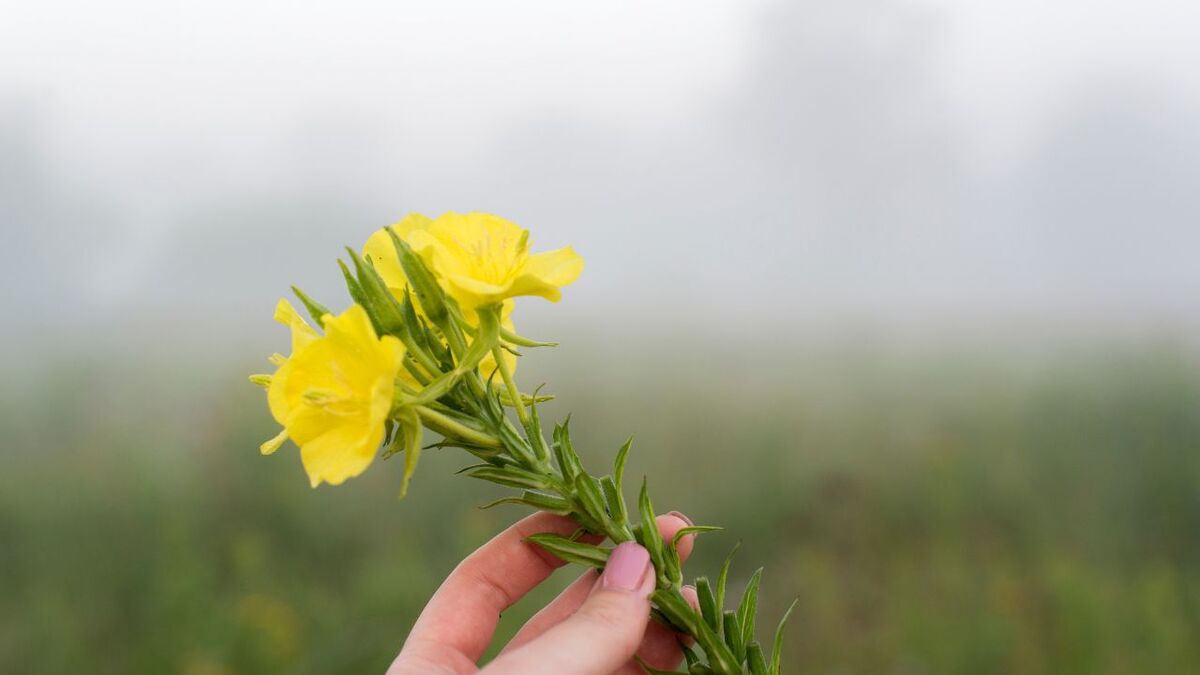
The evening primrose: your shining star for survival cuisine and wilderness pharmacy
👉 The key facts from this guide
- The evening primrose is a robust, biennial wild plant that only opens its striking yellow flowers in the evening – a real highlight at sunset!
- Almost all parts of the plant are edible: the root in its first year (referred to as "ham root"), tender leaves, flowers & buds, and the oil-rich seeds.
- It grows in dry, sparse places like roadside edges, railway embankments, or rubble sites – perfect for nature and survival enthusiasts!
- Evening primrose is also a medicinal plant: Traditionally, it was used, for example, for skin problems, coughs, or pain – and its oil is rich in healthy gamma-linolenic acid.
- There is a risk of confusion with the mullein, but: evening primrose blooms in the evening, has narrower leaves, and characteristic four-chambered seed capsules.
- A true survival talent: It provides nutritious components at different times of the year – especially exciting for self-sufficiency enthusiasts and wilderness lovers!
Do you know tall plants with yellow flowers? They only open in the evening or at night.
This is the fascinating evening primrose (Oenothera biennis and related species). It is a true survivor.
It often grows in poor soil. Or at the edges of roads. And it can do much more than one thinks.
I love watching this "ruderal plant" as it asserts itself in the most inhospitable places!
For me, the evening primrose is not just a beautiful plant with its striking yellow flowers that only bloom in the evening hours.
Some see it as a weed. But it is very versatile and useful. For me, it is a gift from nature.
It gives us food and medicine. And a little nighttime magic.
Profile: How to Recognize the Glowing Evening Primrose
Before we take a look at their hidden talents, we must of course recognize them safely.
- Botanical name: Oenothera biennis (Common evening primrose – the archetype for us!) and other Oenothera species.
- Family: Evening primrose family (Onagraceae)
- Other names: Evening flower, Yellow rapunzel, Ham herb, Ham root (due to the smell and color of the root when cooked).
- Growing season: June to August.
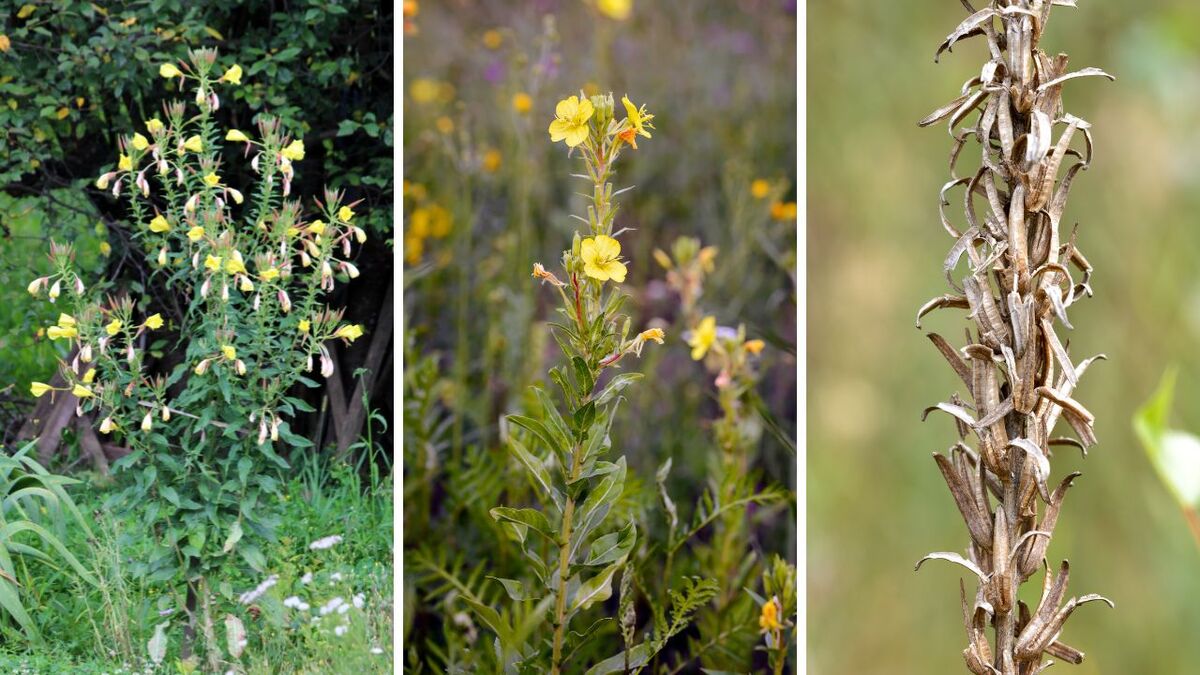
- Growth form: A two-year plant – this is super important to understand!
- In the first year it forms a basal leaf rosette with elongated-lanceolate, often slightly hairy leaves. This rosette is the key to the root harvest!
- In the second year a strong, often reddish tinged and hairy stem shoots up (1 to 1.5 meters), on which the flowers then appear. The flowering moves up the stem – often the seed capsules are already at the bottom while new buds are still at the top.
- Leaves on the stem: Alternate (sometimes also whorled), elongated-lanceolate, also typically slightly hairy. The leaves themselves are also edible, when young they even taste really good, almost like Swiss chard, some say.
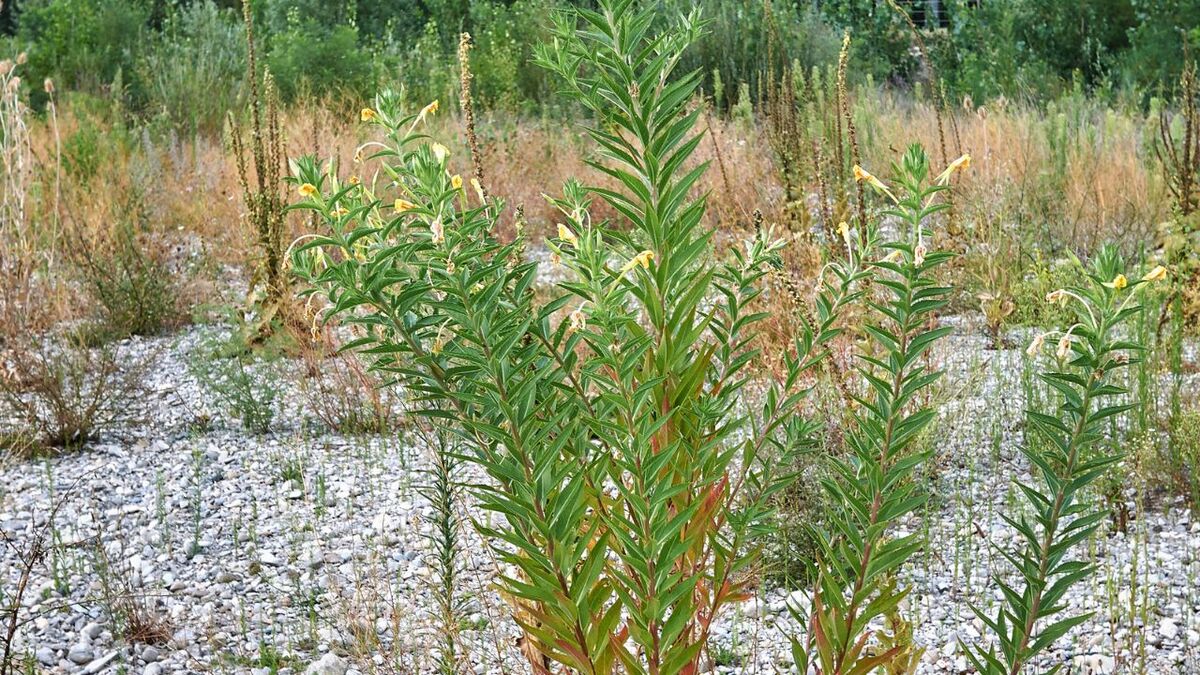
- Flowers: The trademark! Bright lemon yellow, large (often 2-5 cm in diameter), with four petals that often have a heart-shaped indentation. They usually open only in the late afternoon or at dusk and often emit a sweet scent to attract moths for pollination (sticky pollen!). By the next morning, they are often already wilted. A sure distinguishing feature is that the flowers grow between the leaves and the stem.
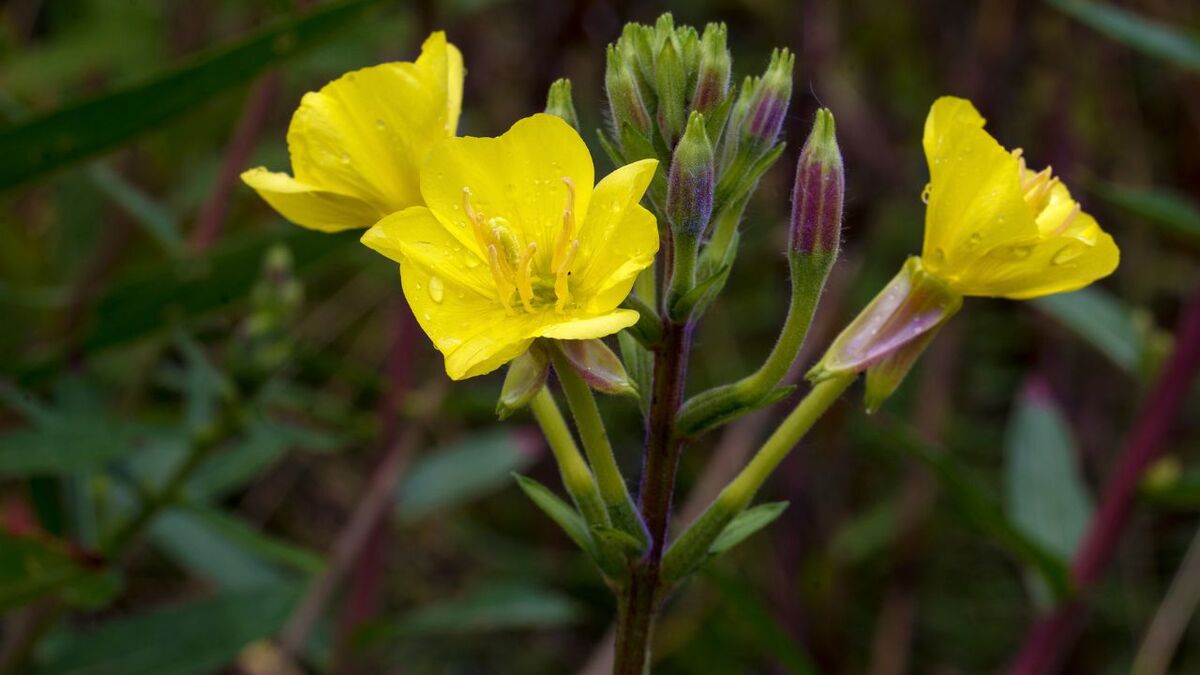
- Fruit capsules: After flowering, elongated, four-chambered seed capsules develop, which are located in the leaf axils. These dry out, open up, and release countless small, dark seeds. These seed heads often remain on the dead, woody skeletons of the plant throughout the winter – a blessing for us collectors!
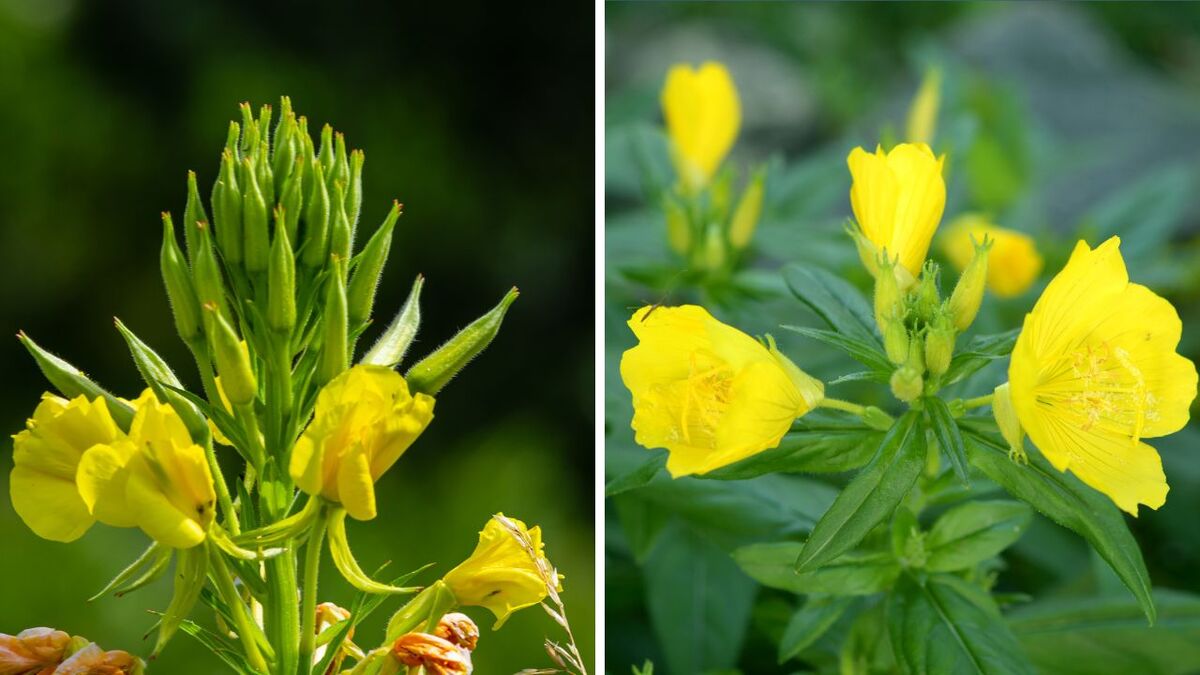
- Root: In the first year, the plant forms a thick, fleshy taproot that is edible. It has an interesting reddish color that can become even more pronounced when cooked.

Where the evening primrose illuminates the night
The evening primrose is a true neophyte – it was brought from North America to Europe around 1620 according to Wikipedia and has since successfully spread.
You often find them in sunny, rather dry and barren locations, the typical ruderal areas:
- At road edges, railway embankments, dump sites, construction sites.
- On fallow land, in gravel pits, in case of rockfall.
- It is undemanding and thrives on little nutrients and water.
I have seen them grow in the most incredible places where hardly anything else thrives.
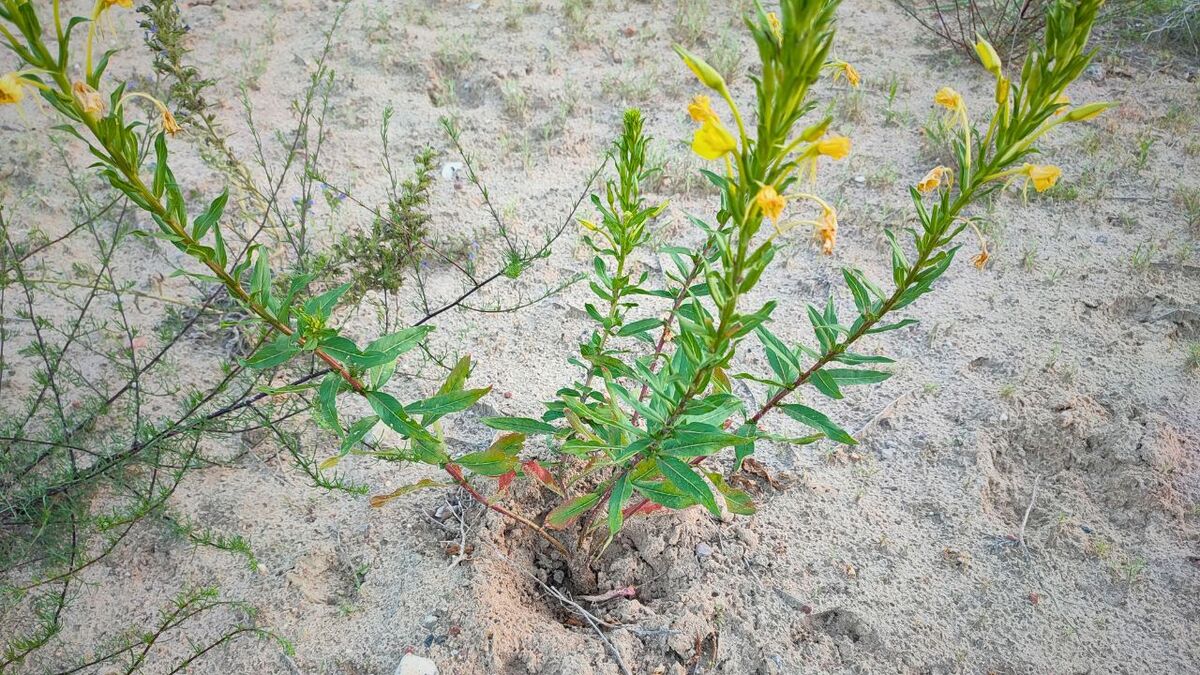
Risk of confusion? Relatively low, but pay close attention!
The evening primrose is relatively easy to recognize. Its growth form is typical:
- In the first year, it creates a rosette.
- In the second year, a tall flower stalk grows.
Your large, yellow flowers have four petals and open in the evening. In addition, it has four-chambered seed capsules.
Confusion with the mullein (Verbascum spp.)?
The evening primrose and the mullein can be easily confused at first glance, as both are yellow-flowering plants with similar stature and leaves.
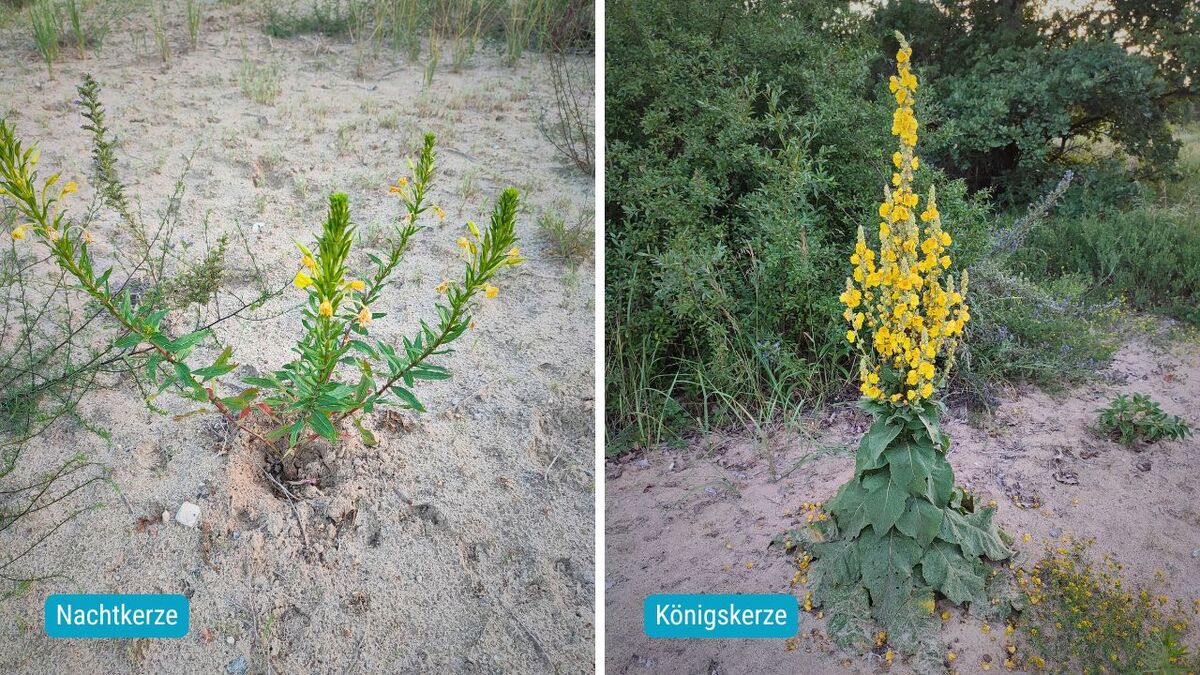
The main differences lie in the flowering time and the leaves. The evening primrose opens its flowers in the evening and has narrow, lance-shaped leaves, while the mullein has large, woolly hairy leaves.
- Blooming period: The evening primrose blooms in the evening, while the mullein blooms during the day.
- Leaves: The evening primrose has smooth or slightly hairy, lance-shaped leaves, while the mullein has large, woolly hairy leaves that often resemble lamb's ears.
- Use: Both the evening primrose and the mullein are used in naturopathy. The evening primrose is valued for its oil, which is rich in omega-6 fatty acids. The mullein is used for coughs and bronchitis.
The good news is that there are no toxic plants that could easily be confused with evening primrose when closely examining the characteristics.
If you see the four petals and the typical seed pods, you can be quite sure.
However, it is always true: If you are not 100% sure, stay away from it or ask someone who knows!
The Evening Primrose: Your Survival Treasure for Stomach and More
Now it gets exciting! What makes the evening primrose so valuable for us wilderness enthusiasts? This plant is a real survival food because almost all parts are usable!
1. The root: Your "wild carrot" in the first year – The ham root!
This is one of the greatest survival advantages of the evening primrose for me: The fleshy taproot of the annual plant (WITHOUT flower stalks!) is edible and really nutritious.
Harvest Time
Best in the autumn of the first year (from October) or in the early spring of the second year (until February/March), before the flower stalk shoots up.
As soon as the plant puts its energy into the stem and the flowers in the second year, the root becomes woody and is no longer as edible. You must learn to recognize the rosettes in the first year – that is the real art!
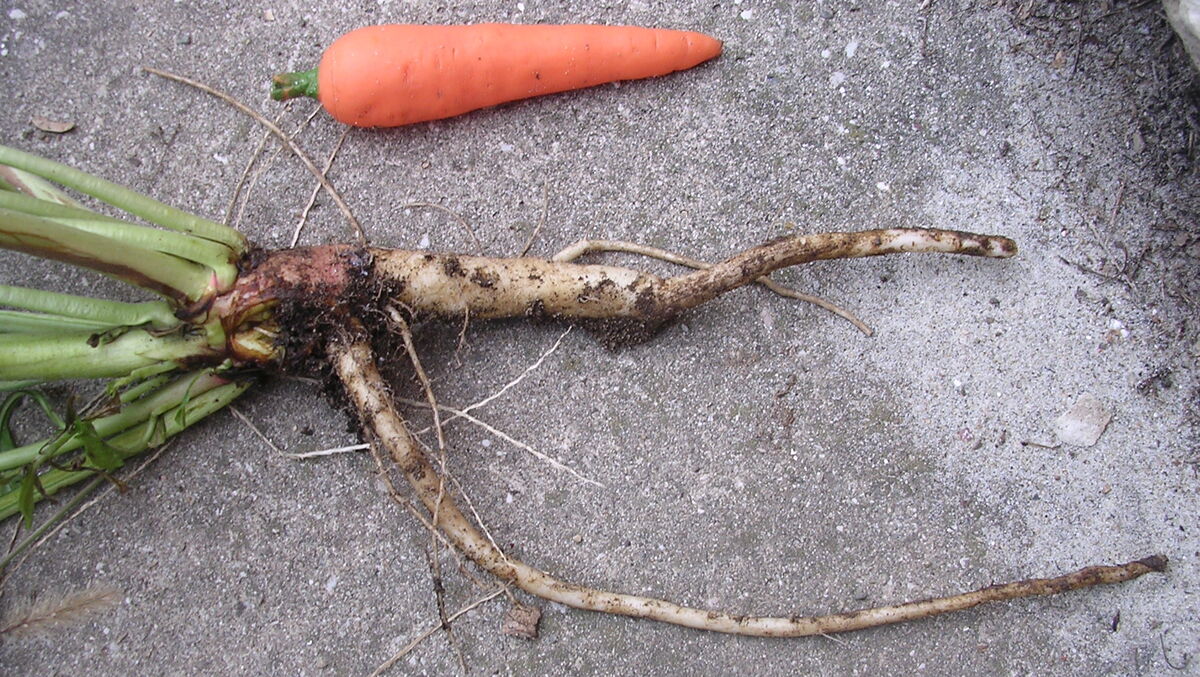
Taste & Preparation
Raw, it tastes slightly spicy. Cooked or fried, it becomes milder and tastes slightly sweet, nutty, and reminds some of a mix between carrots and potatoes or asparagus.
The term "ham root" or "ham herb" comes from the fact that when cooked, it is supposed to take on a pink to ham-like color (although this is not always strongly pronounced in some trials – my experience is that it tends to become lighter, but the reddish outer skin is distinctive).
My Experience
Cooked, the root is buttery soft, not at all fibrous, and has a pleasant, slightly sweet note with a very light spiciness. Much better than some thistle roots that often remain tough!
The cooking time is remarkably short, often only 5–15 minutes. I prefer to cook them plain, without salt and pepper, to experience the pure taste. The broth itself then tastes like a delicious, hot vegetable broth!
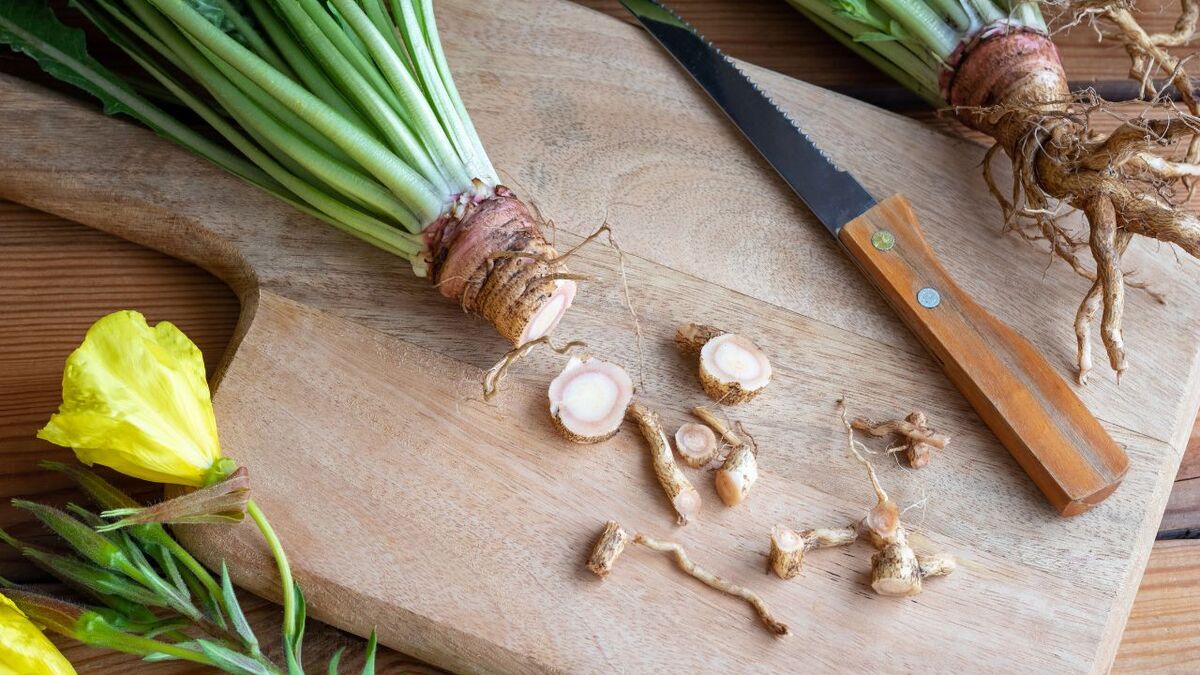
Nutritional Value
It contains carbohydrates (probably starch and also inulin, which has a prebiotic effect but can cause bloating in some when raw), protein, and minerals.
Why is this so important for survival? Roots are often a reliable, energy-rich food source that is available even when there is little to be found above ground.
The evening primrose root is a real insider tip! I find it incredible to be able to obtain such a nutritious root directly from nature.
2. Flowers & young leaves: Edible splashes of color and greenery
Flowers & Buds
The bright yellow flowers and also the still closed buds are not only beautiful but also edible.
They have a slightly sweet, sometimes slightly spicy taste and are excellent as edible decoration for salads or other dishes.
I love to snack on them freshly picked – a little sweet treat on hikes.

Young Leaves & Shoots
The very young leaves of the rosette or the young shoots (also those from the stem in the second year) can also be eaten – best raw in a salad (taste delicious!) or cooked like spinach/chard.
You harvest them from April to June when the plant has not yet bloomed. When you cook them, the mucilages unfold, thickening the vegetables during cooking.
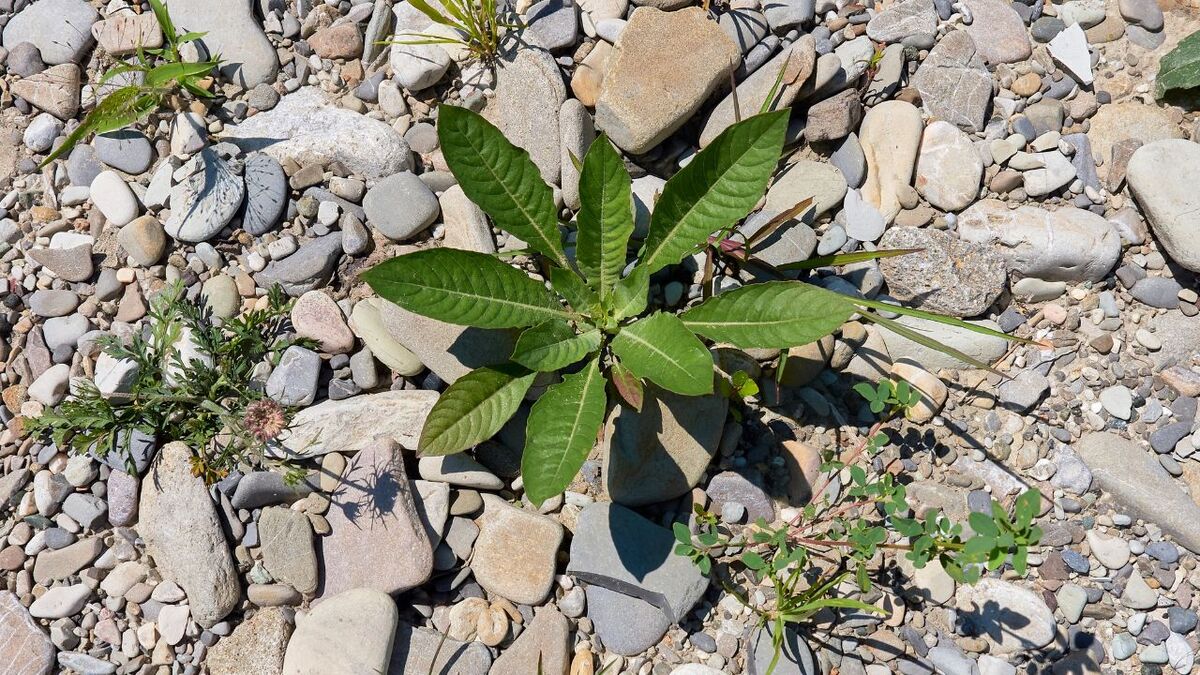
3. The Seeds: Small Powerhouses with Valuable Oil – The "Survival Sesame"
The small black seeds (from September) in the capsules are also edible and very nutritious, as they are very oil-rich.
Evening Primrose Oil
The well-known evening primrose oil is pressed from the seeds, which is rich in gamma-linolenic acid (GLA), an important omega-6 fatty acid.
This oil is sincerely appreciated in cosmetics and natural medicine because it contains essential polyunsaturated fatty acids that are rarely found in plants (and are significant for us humans).

Survival use of the seeds
The seeds are small, but you can harvest several thousand from one plant! I once collected over 500 g of seeds in an hour from a small field – that's a considerable amount!
Important: The seed shells are robust and often pass through the body undigested. To access the valuable oil and nutrients, one should definitely chew the seeds, grind them (e.g., crush with a knife handle or grind between stones).
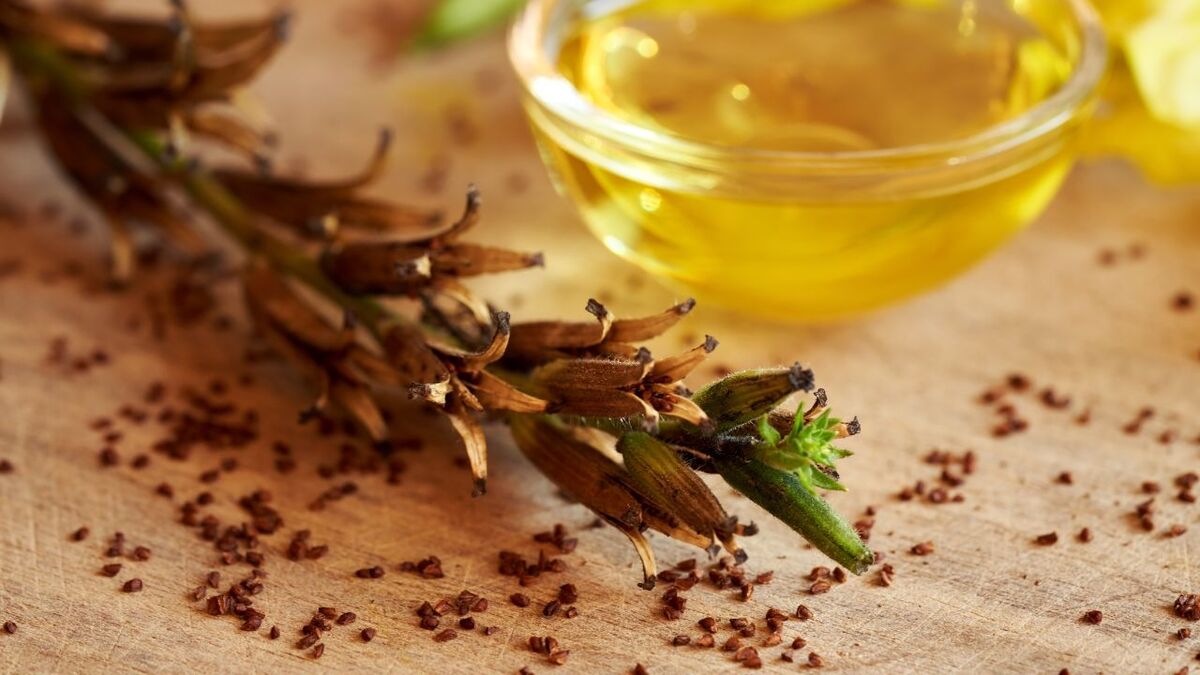
Or you roast them and then crush them. You can also cook them in soups and crush them a bit.
- Taste: Young, still light seeds can taste bitter. The ripe, black seeds (from September) are more pleasant and oily-nutty.
- Storage: The dry seed heads with the seeds often remain standing throughout the winter. You just have to knock the seeds out of the capsules into a container.
For me, the seeds are an absolute highlight because they represent a concentrated source of fat and protein that can often still be found late in the year. Therefore, I have included this great plant in my guide "Food foraging in winter: 41 edible things from the wilderness".
4. More than just food: Traditional medicinal plant
The evening primrose also has a long tradition as a medicinal plant:
The First Nations in North America (where the plant originally comes from and was referred to as the "plant of the paths") used various parts of the plant for coughs, wounds, skin problems, and pain relief. It was an important food and medicinal plant for them.
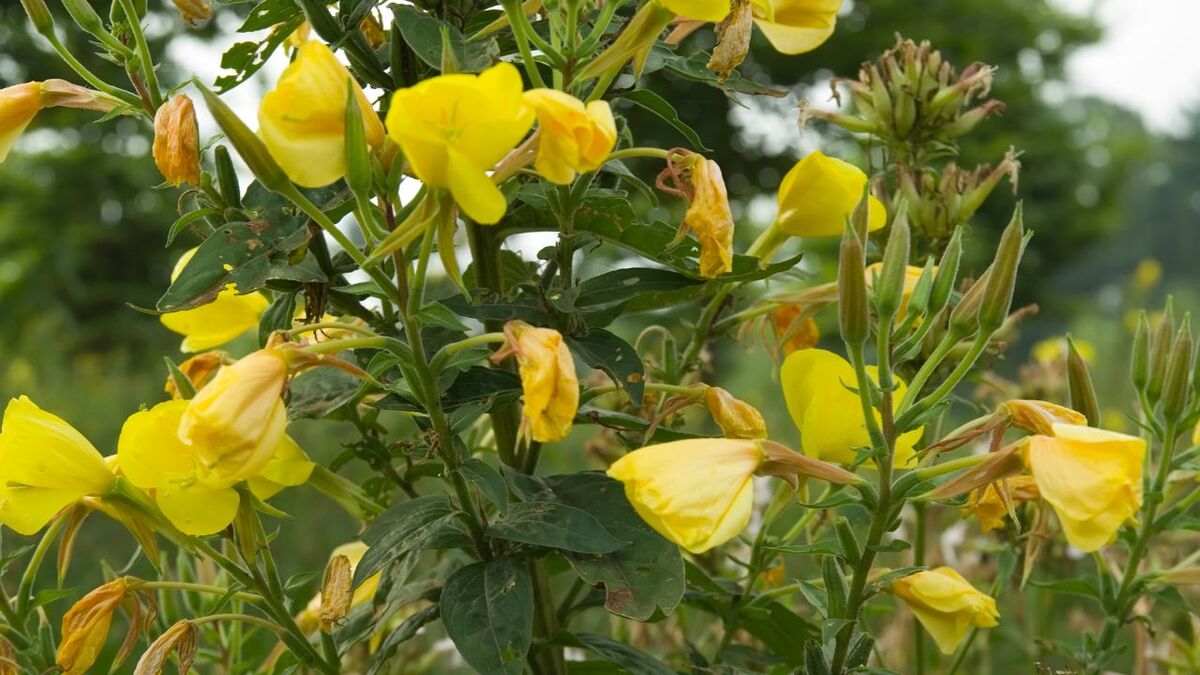
5. Hand drill and other bushcraft applications?
The question often arises: Can you make fire with the dry flower stem of the evening primrose, e.g., by hand-drill?
My Assessment
The dry stem is indeed hard, but often also brittle and has a pithy core. Therefore, it is rather unsuitable for the hand drill and would likely break or wear out too quickly. There are significantly better woods.
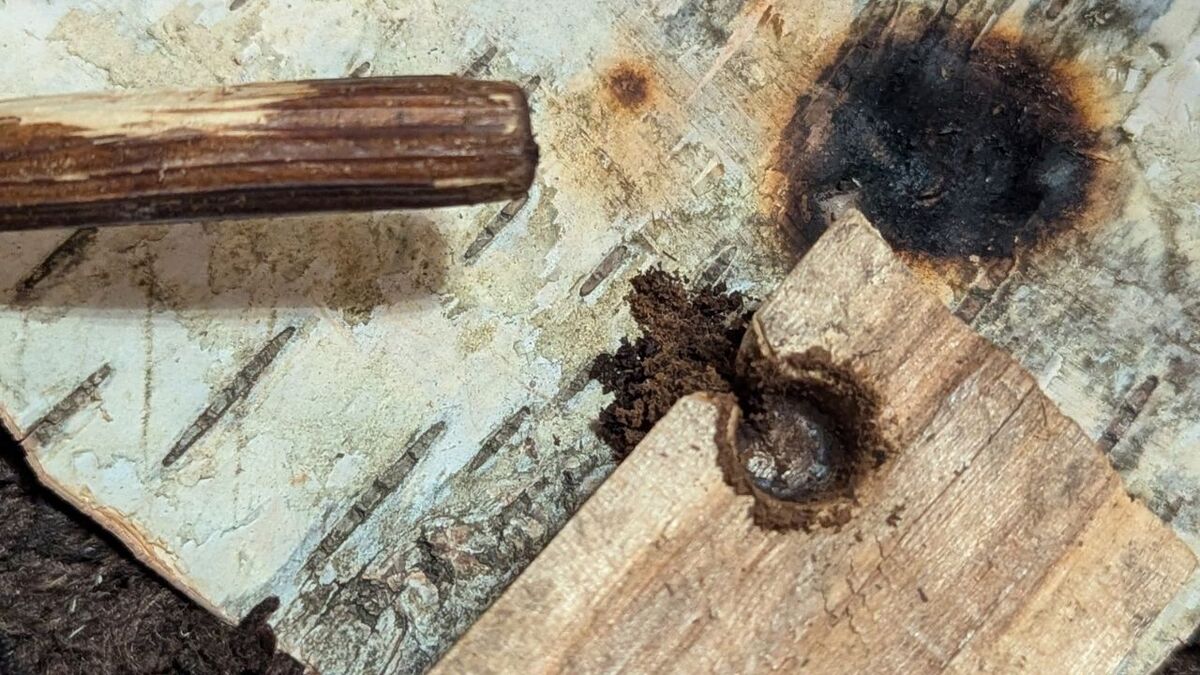
Tinder
The fine fibers of the dry stem or the contents of the seed capsules could serve as tinder extension, but there are better options here as well (read my guide on tinder).
The strength of evening primrose clearly lies in the food sector!
The Evening Primrose as a Teacher: Observation and Appreciation
The engagement with the evening primrose teaches us important wilderness skills:
- Be a patient observer: Recognizing when the root is optimal in the first year requires careful observation and an understanding of the two-year growth cycle. It's like a little puzzle that you get to solve anew each year.
- Find the "hidden" treasures: The inconspicuous rosette in the first year holds the valuable root – a symbol that nature does not always present its gifts openly. It teaches us to look more closely and not just perceive the obvious.
- Respect the rhythm of nature: The evening flower opening reminds us of the different schedules of the living beings around us. A small reminder that not everything operates according to our human tempo.
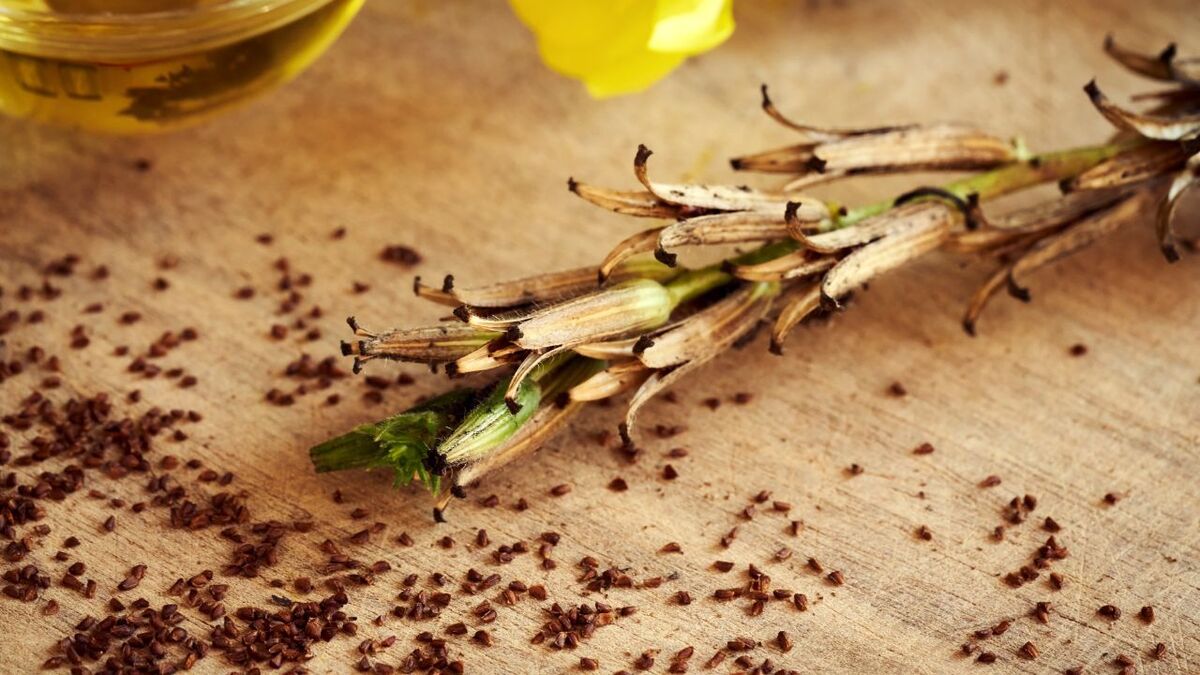
Conclusion: More than just a pretty flower by the wayside – A true survival talent!
The common evening primrose is a wonderful example of a plant that is often underestimated.
It is robust, adaptable, and offers us an amazing abundance of food and potential healing power from the roots to the leaves and flowers to the seeds.
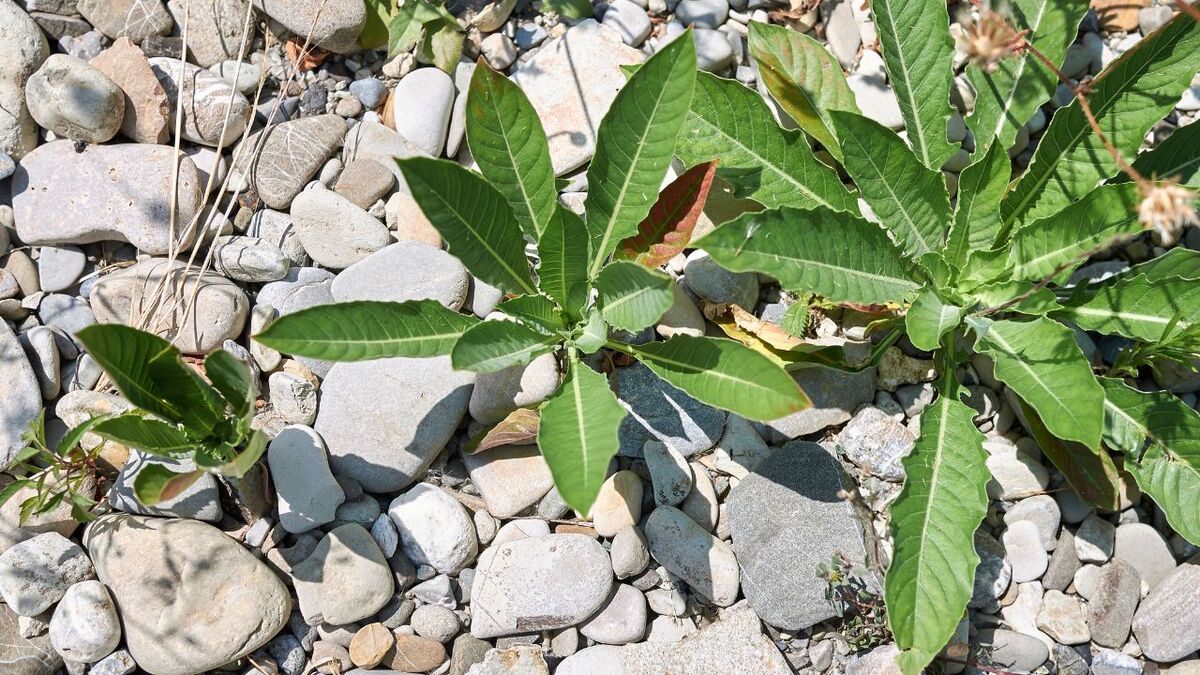
For me, it is a symbol of the resilience and generosity of nature, which provides for us even in the most barren places, if we only learn to walk through the world with open eyes and a curious heart.
Take some time on your next walk at dusk to look for their glowing flowers.
And perhaps you will discover an inconspicuous rosette next spring or autumn and remember the treasure that lies hidden beneath it.
It is worth getting to know this plant – it could serve you well in an emergency situation or simply enrich your menu in wonderful and unexpected ways! Keep an eye on it!


Author of the guide
Martin Gebhardt
Hey, I'm Martin. On my blog, you will learn the basics and numerous details about living in the wild. I think survival, bushcraft and the good life in nature are the keys to happiness. Find me here on Instagram or on YouTube. You can find more about my mission on the About Me page.
Was this guide helpful?
14 people found this guide helpful.
5.00 out of 5 points (14 Ratings)
Comments (0)
This post may contain affiliate links. So if you click on the links and make a purchase, I will receive a small commission at no additional cost to you. Click here, to learn more about it.


